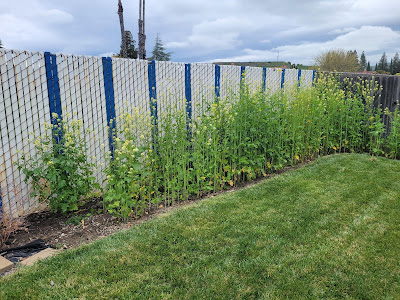Over the last winter, I decided that it was time to clean up the soil in the entire garden. While most people would have concerns with sterilizing soil, after growing cucumbers in my plot for years and years, I felt it was time to refresh the soil in the entire garden by sterilizing it.



I began by pulling down all of the summer crop that I was growing and clean up all the debris. Then I planted out a blend of mustard greens that have been specifically designed to be used for this purpose. After they grew for a while and were beginning to flower, I tilled them in to the soil and covered the area with soil with my potting soil, watered it in and covered the entire garden with black plastic. Then I waited 2-3 weeks. The next thing I did was remove the black plastic, and incorporate biological fungicides. Prior to growing the mustard greens I had noticed a large amount of fungus that was growing around the roots of some healthy plants. I decided to mine this fungus and refrigerate it until I was done with the biofumigation process. With the biofumigation process behind me, I incorporated the fungus along with the bacterial fungicides, then planted out the fava beans. To summarize, here are the steps to biofumagate your soil.
 |
Measuring the width of the garden
|

 |
Chopping down the mustard greens
|
1. Grow brassicas, mustard greens and/or spicy radishes (the more biomass, the better)
2. Till them in.
3. Water
4. Cover with plastic (as soon as possible after tilling)
5. Remove plastic
6. Allow to gas off
7. Incorporate healthy bacteria and fungi
8. Grow a crop that helps to restore the soil.

Though the plants did relatively well to begin with, weeks of dry winter weather began taking their toll on the growing fava beans. At this time, the fava beans are just getting by with me watering them once every couple of weeks. The relatively rainy weather of Northern California that was common in my youth is gone. As water is life, the prior life that many of us have known for so long in this area has become at least threatened, if not a sweet memory. While we cannot the weather, we trust that blessings will flow as we continue to pray for rain.








































